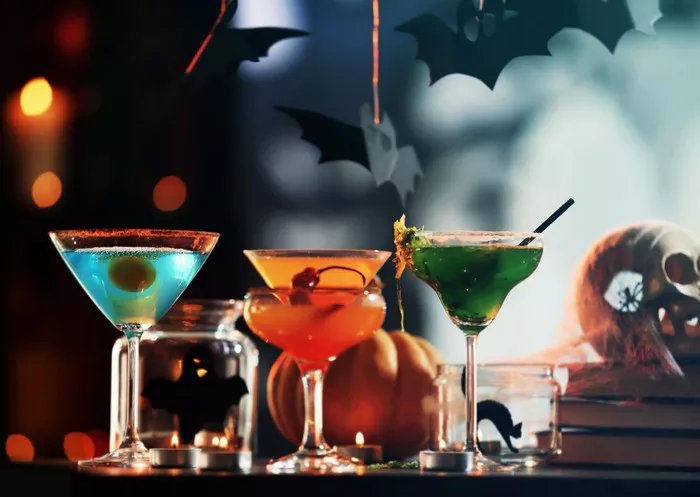The signature cocktail, a quintessential element of any remarkable bar experience, is more than just a drink; it’s a statement of artistry and innovation. Whether you’re sipping a martini at a swanky downtown lounge or enjoying a tropical delight on a beachside vacation, signature cocktails are the liquid embodiment of a bar’s personality. In this article, we delve into the world of signature cocktails, exploring their history, importance, and the creative process behind crafting these exquisite libations. So, let’s raise our glasses to the beauty of the signature cocktail.
The Roots of the Signature Cocktail
To truly understand the concept of a signature cocktail, one must first journey through the annals of cocktail history. The origins of the term “cocktail” itself are shrouded in mystery, with various theories abounding. However, one thing is clear: the art of mixing spirits and flavors has a rich heritage. It was in the early 19th century that the first cocktails began to appear, often composed of simple combinations like sugar, bitters, water, and spirits.
The first true signature cocktails emerged in the 19th century, with classic libations like the Sazerac, Mint Julep, and Martini gaining popularity in their respective regions. These early signature cocktails were typically associated with specific bars or bartenders known for their unique concoctions. Over time, as cocktail culture evolved, bars and mixologists began to create their own signature drinks, giving birth to a tradition that continues to flourish today.
Importance of the Signature Cocktail
Signature cocktails play a pivotal role in the world of mixology and hospitality, as they offer several crucial advantages for both patrons and establishments.
Distinctive Identity:
A signature cocktail is the calling card of a bar or restaurant. It embodies the establishment’s personality, creativity, and expertise. It allows patrons to connect with the venue on a deeper level, as they can associate the cocktail with their memorable experiences.
Unique Selling Proposition (USP):
In a competitive market, having a standout feature is essential. Signature cocktails serve as a unique selling proposition that sets an establishment apart. They provide a reason for patrons to choose one bar over another, making it a critical marketing tool.
Customer Engagement:
Signature cocktails engage patrons by offering them a taste of the extraordinary. The intrigue of a well-crafted, exclusive drink can spark conversations and lead to social media buzz, further promoting the venue.
Profit Margin:
Creating a signature cocktail allows an establishment to command a premium price. Patrons are often willing to pay more for a unique, memorable experience. Thus, a well-crafted signature cocktail can contribute significantly to an establishment’s profit margins.
Creativity Showcase:
Mixologists and bartenders get to express their artistry and creativity through signature cocktails. These drinks are a canvas for inventiveness, encouraging the exploration of diverse ingredients and presentation techniques.
The Creative Process of Crafting a Signature Cocktail
The development of a signature cocktail is a meticulous process that involves various steps, from conceptualization to the final pour. Let’s break down the stages of creating a signature cocktail.
Conceptualization:
The journey begins with an idea or concept. The bar or mixologist must decide what they want the cocktail to represent. Is it a tribute to the venue’s history, a reflection of local culture, or an innovative twist on a classic? The concept sets the direction for the cocktail’s ingredients, name, and presentation.
Ingredient Selection:
Choosing the right ingredients is crucial. Mixologists consider the base spirit, modifiers (such as liqueurs or bitters), sweeteners, and garnishes. These components should harmonize, creating a balanced and delightful flavor profile.
Examples of Iconic Signature Cocktails
To gain a deeper appreciation for signature cocktails, let’s explore a few iconic examples from around the world.
The Martini – The Classic Signature Cocktail:
The Martini is perhaps one of the most famous signature cocktails globally. Originally made with gin and vermouth, it’s a symbol of sophistication and refinement. Iconic variations include the Dry Martini, Dirty Martini, and the Vesper Martini, made famous by James Bond.
The Pisco Sour – A Taste of Peru:
The Pisco Sour, hailing from Peru, is a citrusy and frothy delight. It features Pisco, a grape brandy, mixed with lime juice, simple syrup, and egg white, creating a balanced and refreshing experience.
The Mai Tai – Tiki Timelessness:
The Mai Tai is the quintessential tiki cocktail. Created by Trader Vic in the 1940s, it blends light and dark rums with lime juice, orgeat syrup, and orange liqueur. This tropical masterpiece is a vacation in a glass.
The Moscow Mule – A Copper-Clad Classic:
The Moscow Mule, served in a distinctive copper mug, combines vodka, ginger beer, and lime juice. It’s a zesty and effervescent signature cocktail that has experienced a resurgence in popularity in recent years.
The Negroni – A Bitter Elegance:
The Negroni is a timeless Italian classic made with equal parts gin, Campari, and sweet vermouth. Its unique blend of sweet and bitter flavors has made it a favorite among cocktail connoisseurs.
Conclusion
The signature cocktail is a living testament to the innovation, artistry, and creativity of the world of mixology. These unique libations, each with its distinctive personality and story, have the power to elevate the bar experience. From classic cocktails like the Martini to modern creations influenced by pop culture and sustainability, signature cocktails continue to evolve and capture the imaginations of patrons around the world.


